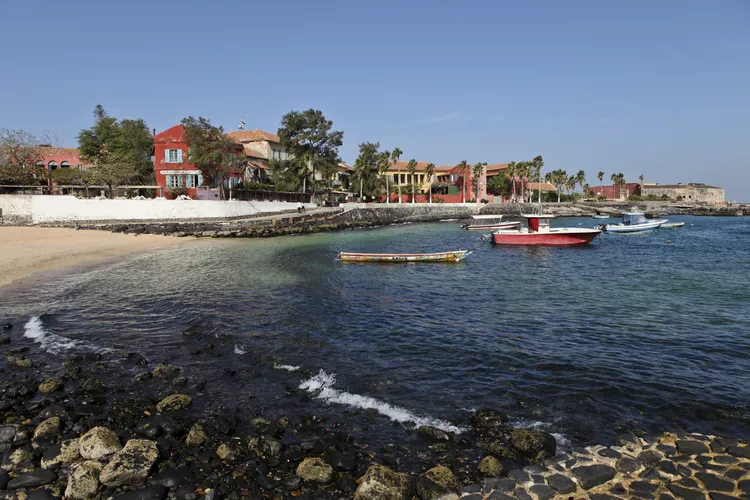Summary
Île de Gorée: A Historical Overview
Île de Gorée, also known as Goree Island, is a small island located just off the coast of Dakar, Senegal’s sprawling capital city. It has a convoluted colonial history and was once a crucial stop on Atlantic trade routes from Africa to Europe and the Americas. Moreover, Île de Gorée has earned a reputation as the foremost destination in Senegal for those eager to learn more about the horrors of the slave trade.
The History of Île de Gorée
Despite its proximity to the Senegalese mainland, Île de Gorée remained uninhabited until the arrival of European colonialists due to a lack of fresh water. In the mid-15th century, Portuguese settlers began colonizing the island. Consequently, its ownership changed frequently, with the Dutch, British, and French all laying claim at various times. From the 15th to the 19th centuries, Île de Gorée was believed to be one of the largest slave trade centers on the African continent.
Île de Gorée Today
The horrors of the island’s past have subsided, leaving behind peaceful colonial streets adorned with the striking, pastel-painted houses of former slave traders. The historic architecture and its role in enhancing understanding of one of humanity’s most shameful periods have collectively granted Île de Gorée UNESCO World Heritage Site status.
Furthermore, the legacy of those who lost their freedom—and often their lives—as a result of the slave trade lingers in the island’s somber atmosphere, memorials, and museums. As such, Île de Gorée has become a significant destination for individuals interested in slave trade history. Specifically, the building known as the Maison des Esclaves, or House of the Slaves, serves as a place of pilgrimage for descendants of displaced Africans who wish to reflect on their ancestors’ suffering.
Maison des Esclaves
The Maison des Esclaves was inaugurated as a memorial and museum dedicated to the victims of the slave trade in 1962. Its curator, Boubacar Joseph Ndiaye, claimed that the original house was utilized as a holding station for slaves bound for the Americas. It served as the last glimpse of Africa for more than a million men, women, and children condemned to a life of slavery.
Although Ndiaye’s assertions have drawn the attention of numerous world leaders, including Nelson Mandela and Barack Obama, several scholars dispute the house’s role in the island’s slave trade. The house was constructed towards the end of the 18th century, by which time the Senegalese slave trade was already in decline, and peanuts and ivory had taken over as the country’s major exports.
Regardless of the site’s true history, it remains a poignant symbol of a very real human tragedy, serving as a focal point for those wishing to express their grief. Visitors can take guided tours of the house’s cells and gaze through the portal still referred to as the “Door of No Return.”
Other Île de Gorée Attractions
Île de Gorée offers a serene alternative to the bustling streets of nearby Dakar. Without cars on the island, visitors are best suited to explore the narrow alleyways on foot. The island’s eclectic history is evident in the myriad architectural styles, while the IFAN Historical Museum, located at the northern end of the island, provides an overview of regional history dating back to the 5th century.
The beautifully restored Church of Saint Charles Borromeo, built in 1830, and the mosque, believed to be among the oldest in the country, add to the cultural tapestry. Moreover, the future of Île de Gorée is represented by its burgeoning Senegalese art scene. Visitors can purchase the works of local artists at the vibrant markets, and the area near the jetty boasts authentic restaurants well-known for their fresh seafood.
Getting There & Where to Stay
Regular ferries depart for Île de Gorée from the main port in Dakar, starting at 6:15 AM and ending at 10:30 PM (with extended services on Fridays and Saturdays). The ferry ride takes approximately 20 minutes. If desired, you can also arrange for an island tour from the docks in Dakar. For those planning an extended stay, Île de Gorée offers several affordable guesthouses. Among the recommended hotels are Villa Castel and Maison Augustin Ly. However, many visitors prefer to stay in the capital and take day trips to the island.





